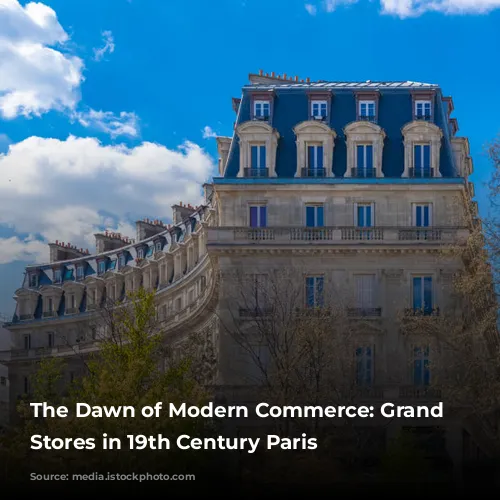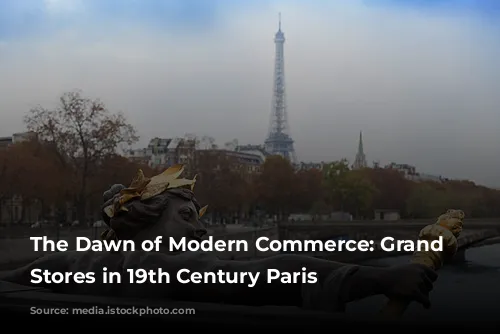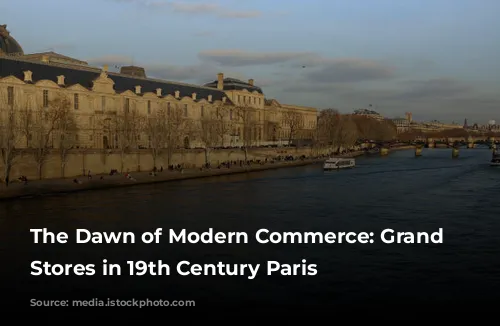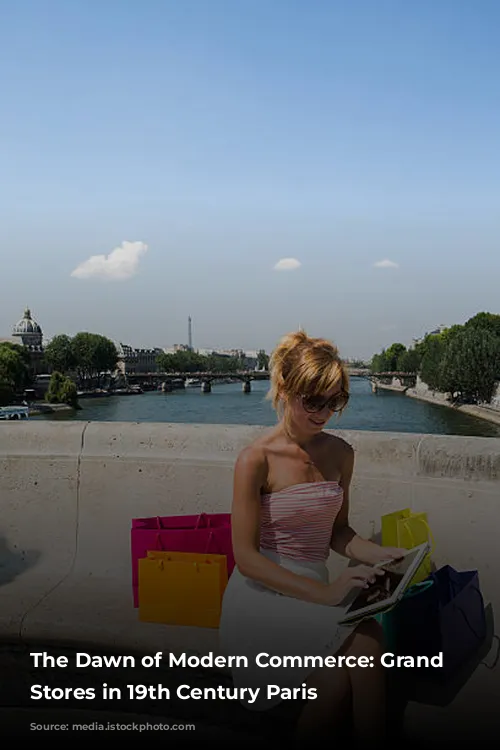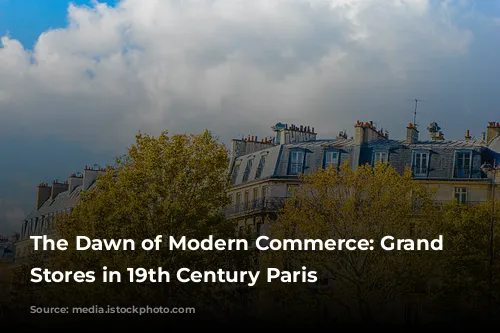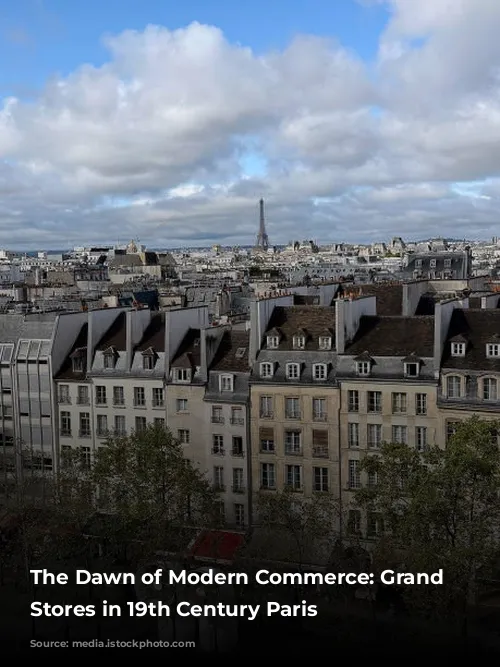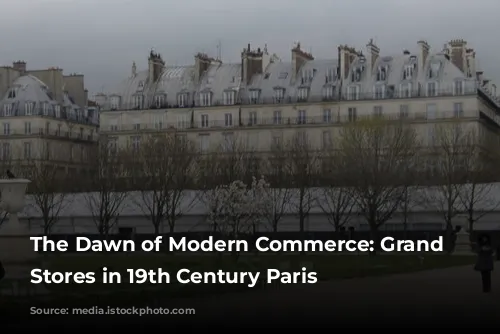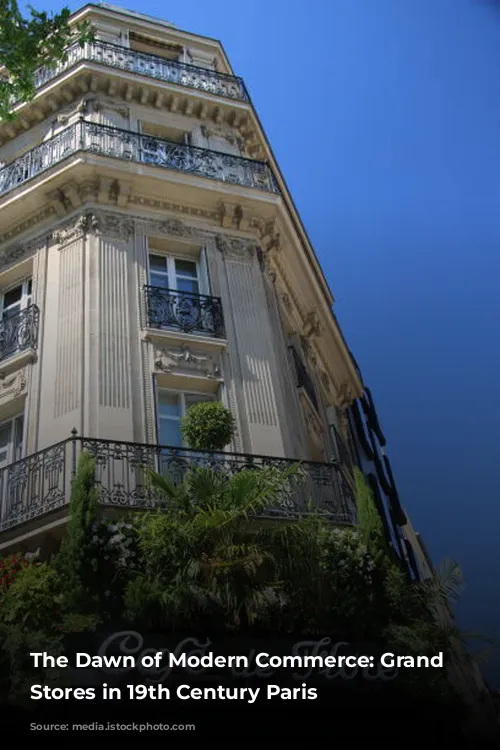The mid-1800s witnessed the rise of grand department stores in Paris, laying the groundwork for modern commerce and a consumer-driven society. This emergence was directly linked to the structural reforms and proactive economic policies implemented by Napoleon III to modernize France. The urban transformations of Haussmann’s Paris are captured in the photographs of Charles Marville, while the expansion of railways was celebrated in numerous tourist posters promoting new vacation destinations. These grand department stores benefited from the ascent of the bourgeoisie, who formed their primary clientele.
In a society where the foundations of a mass culture and the gradual emergence of modern leisure activities were taking shape, “shopping” became a new bourgeois pastime, joining theater, dance, cafes, and concerts. These grand department stores became the “kingdom of women,” as described by Émile Zola in his preparatory notes for the writing of “Au Bonheur des Dames.”

The Visionary Founder and Key Innovations
Zola drew inspiration directly from Aristide Boucicaut, the founder of the first Parisian grand department store, Le Bon Marché, which he inaugurated in 1852. Portrayed in 1875 by William Bouguereau, a leading figure in academic painting, Aristide Boucicaut was the model entrepreneur of the Second Empire. He laid the foundation for modern commerce through major commercial innovations, including:
- Democratizing fashion: Making fashionable clothing accessible to a wider range of people.
- Inventing sales and seasonal promotions: Offering discounts and special events to stimulate purchasing.
- Targeting children as consumers: Recognizing the growing importance of children in the market.
- Introducing mail-order sales: Expanding reach beyond physical stores.
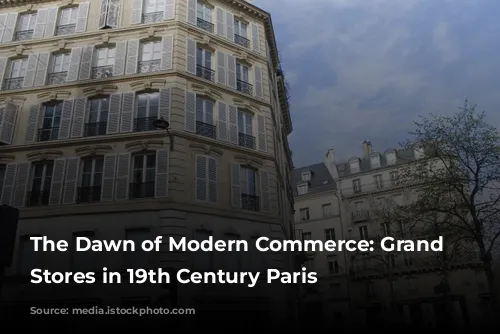
The Rise of the Parisian Woman and Democratization of Fashion
The 19th century, the age of Baudelaire’s flâneur, was also the era of the Parisian woman, a mythical and multifaceted figure whose shadow marked the walls of the grand department stores of the capital. These temples seduced the Parisian woman; she could touch, look at, and try on merchandise. A poster by Henri Thiriet designed to promote a “white” exhibition at Place Clichy highlights the tactile relationship with the displayed goods.
The economic model on which these establishments relied—notably, cost reduction—enabled the implementation of prices that defied competition. A large portion of the population, both French and foreign, gained access to goods previously reserved for the elite. Clothing, whose production was becoming increasingly mechanized and rationalized, was not immune to this democratization process. The Grand Magasins du Louvre, for instance, boasted of influencing fashion, claiming not to copy it but to create it. However, some department stores adopted models from couturiers and haute couture, such as a dress from Les Trois Quartiers dated 1910, which evokes the creations of Paul Poiret.
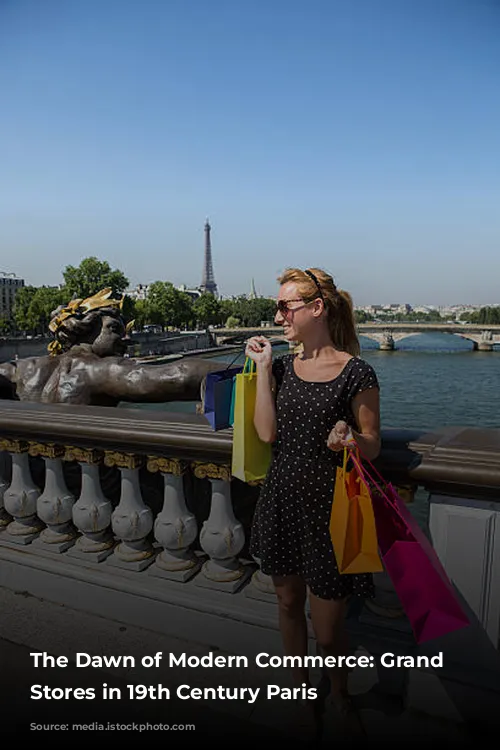
The Child as a New Consumer: A Reflection of Changing Societal Values
The appearance of children’s departments echoed the increasing importance of children within families in the 19th century. This socio-psychological evolution is reflected in the material culture of the time. Children’s clothing gradually differentiated itself from adult attire, and toys, such as a 1910 sailor suit from La Belle Jardinière or the so-called Highlander outfit (1907) from Les Trois Quartiers, illustrate this change. Children quickly became a new target audience, with stores offering them optical illusions, construction toys, and imitation games that mimicked professions or everyday activities, such as a miniature Singer sewing machine.
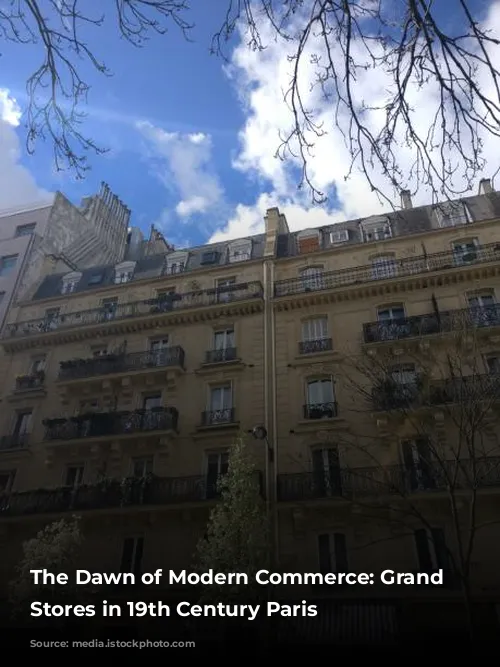
Revolutionizing Retail: The Rise of Mail-Order Catalogs
At Le Bon Marché, Aristide Boucicaut implemented mail-order sales to dispose of ever-increasing production. The richly illustrated sales catalogs contributed to expanding the clientele both within France and abroad. A poster by Ferdinand Lunel depicts how orders were shipped from Place Clichy to the Parisian suburbs. A uniform from Les Trois Quartiers illustrates the world of delivery personnel. Initially annual, these catalogs, printed in very large numbers, quickly became seasonal, multiplying as departments expanded to include housewares, silverware, porcelain, lighting, tapestry and decoration, and travel accessories. They offer insights into the evolving lifestyles and tastes of the bourgeoisie in terms of fashion, decoration, home furnishings, and leisure.
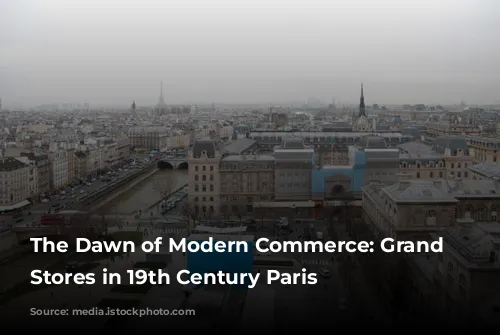
From the Belle Époque to the Roaring Twenties: Art Studios in Department Stores
The establishment of art studios within department stores emerged in the interwar period, with the rise of a new generation of creators eager to band together and revitalize the role of decorative arts. Le Printemps was a pioneer, inaugurating the Primavera design studio in 1912. Specializing in the mass production of furniture and art objects, this studio offered decorative objects and modern furniture at affordable prices. It recruited young artists from applied arts schools who were sensitive to new aesthetic trends. In 1921, Galeries Lafayette entrusted the direction of their studio, La Maîtrise, to Maurice Dufrêne (1876-1955). Le Bon Marché, meanwhile, launched the Pomone studio, initially directed by Paul Follot (1877-1941). Finally, the Grand Magasins du Louvre created the Studium-Louvre in 1923. Étienne Kohlmann (1903-1988) took over the artistic direction of the Studium in 1927 but produced works for this studio before that date. An exceptional buffet presented in the exhibition, created around 1924, attests to this involvement.
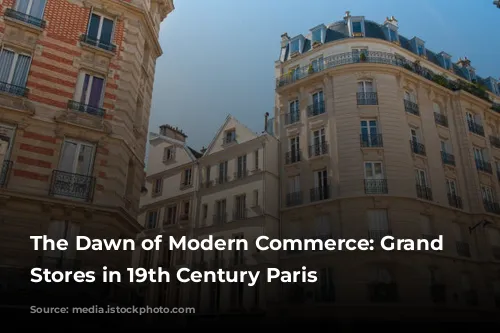
The International Exposition of Modern Decorative and Industrial Arts of 1925: A Culmination of Innovation
The event that symbolized the pinnacle of these art studios was the International Exposition of Modern Decorative and Industrial Arts of 1925. Each grand department store had a monumental pavilion, allowing it to promote its finest creations in furniture, ceramics, textiles, glass, and other decorative objects. Photographs by Albin Salaün and François-Antoine Vizzavona capture the beauty of these buildings, both externally and internally. Fashion pieces, furniture, toys, and advertising posters gathered at the Musée des Arts Décoratifs tell the story of a birth, that of department stores, but also of an entire era. This new modern commercial panorama in Haussmann’s Paris gave women a new role by offering them dedicated spaces. In these spaces, a new kind of place emerged: the Parisian woman, a myth of beauty and elegance that remains very much alive today. A true ferment of inventions and creativity, the exhibition highlighted the fundamental place of department stores in the Parisian landscape, from the Belle Époque to the Roaring Twenties.
